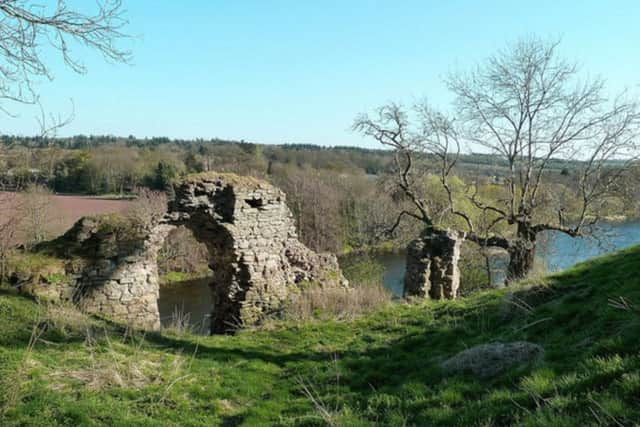On this day 1313: Scots forces disguised as cows seize castle from English
The staunch ally of Robert the Bruce chose a night attack on the important border stronghold that stands, now a ruin, on the banks of the River Tweed.
It was in this fortress that Mary Bruce, the sister or Robert, was locked in an iron cage for four years and treated as a hostage by the English during the first War of Independence.


Advertisement
Hide AdAdvertisement
Hide AdAccording to The History of the Black Douglas, the 1313 attack was planned to coincide with the night of Shrovetide - a Roman Catholic holiday “that was solemnized with much gaiety and feasting”.
On February 19, 1313, he and 60 of his men approached the castle draped in black cloaks to fool the English garrison that it was cattle moving in the fields around the castle.
“Now these creeping objects which they saw from the castle wall were no real cattle but Douglas and his soldiers who had put black cloaks above their armour and were creeping about on hands and feet in order without being observed, to get so near the foot of the wall as to be able to get ladders to it,” the account said.
The latest battle device of the day was deployed in the assault - rope ladders which hooked onto the end of extra-long spears.
With the ladder fixed to the battlements, a member of the garrison emerged to see what was happening only to find chief Douglas’ ally, Sim of Leadhouse, at the top of the ladder.
Quickly, the English soldier was dealt with by dirk and his body pulled over the castle wall.
The castle was soon overrun but the governor managed to lock himself away in the main Donjeon tower. However, he was badly injured by an arrow and agreed to surrender if he and his men could return to England.
With the English removed, Robert the Bruce then ordered the demolition of the fortifications, as he had with most castles, to prevent further occupation.
Advertisement
Hide AdAdvertisement
Hide AdThe castle first appears on record in 1125, and from its earliest days it was an important centre of power at regional and national level and was often involved in key events in Scotland’s history.
In the Wars of Independence, the castle changed hands more than once,
Following the capture in 1313, the castle and town of Roxburgh later fell back to the English.
According to Historic Environment Scotland, it was under English control until 1460 when James II laid siege to the fortress with an impressive army drawn from across Scotland.
The Scots, fearful that English forces might occupy it, finally destroyed the fortress in the sixteenth century. In the 1550s, English forces briefly re-occupied the site with the intention of rebuilding a fortress there.
-Some accounts have put the Black Douglas attack of Roxburgh Castle to 1314. Historic Environment Scotland puts it to 1313.
